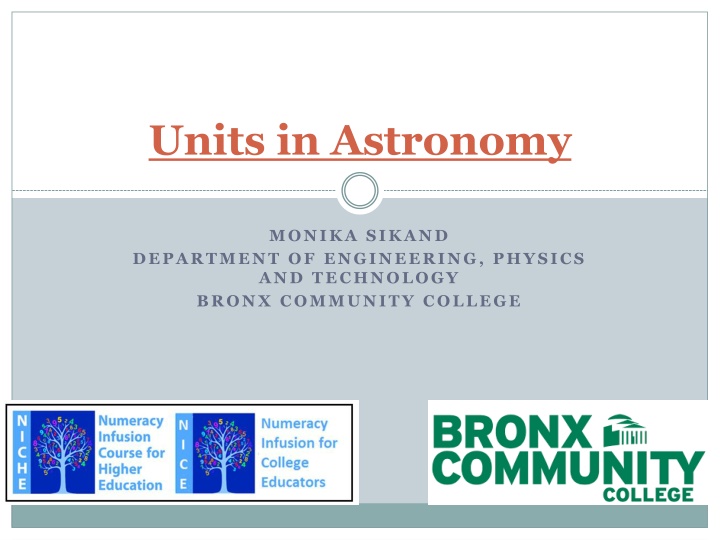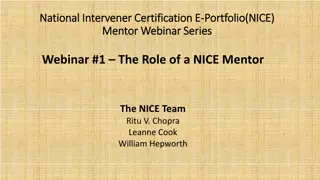
Units in Astronomy and Metric Conversions
Explore the world of units in astronomy, learn about metric and English systems, and master basic unit conversions. Develop skills in recognizing different units and scale while building a habit of comparing astronomical measurements. Engage with assessment questions to test your knowledge in a fun and interactive way.
Download Presentation

Please find below an Image/Link to download the presentation.
The content on the website is provided AS IS for your information and personal use only. It may not be sold, licensed, or shared on other websites without obtaining consent from the author. If you encounter any issues during the download, it is possible that the publisher has removed the file from their server.
You are allowed to download the files provided on this website for personal or commercial use, subject to the condition that they are used lawfully. All files are the property of their respective owners.
The content on the website is provided AS IS for your information and personal use only. It may not be sold, licensed, or shared on other websites without obtaining consent from the author.
E N D
Presentation Transcript
Units in Astronomy MONIKA SIKAND DEPARTMENT OF ENGINEERING, PHYSICS AND TECHNOLOGY BRONX COMMUNITY COLLEGE
Learning Goals Learning goals Knowledge and Conceptual understanding: Students will be able to identify different units representing measurements of time, distance, mass etc. and review the concept of metric and English system of units such as mile, second, meter, kilometer, kilogram, pounds etc. Students will be able to do basic unit conversion from larger to smaller units or vice versa in metric system of units. For example meter to centimeter or vice versa. Students will be able to identify different units representing measurements of time, distance, mass etc. in Astronomy and understand the concept of units in Astronomy such as light year, astronomical unit (AU), parsec, arc minute, arc second etc. Students will be able to identify the unit 1 (Metric unit) and unit 2 (Astronomy unit) and write correct equation to solve unit conversions for example 1 light year (Unit 2) in meters (Unit 1) converts as 1 light year (ly) = 9.46 1015 meters
Learning Goals Thinking and other skills: Students will be able to develop QL and QR skills by recognizing the scale of bigger and smaller units such as kilo (103), milli (10-3 ), as well as scale of units frequently used in Astronomy such as million (106 ), billion (109), micro (10-6 ), and nano (10-9 ) to develop thinking skills in reading graphs, trends or patterns to understand the astronomical data. Attitude, value, disposition and habits of mind: Students will develop a habit of comparing the values of newly learned Astronomy units to measurements around us such as kilometer, mile in the international unit system (metric).
Assessment Questions Assessment question 1 a: Convert 4.5 m to cm? ( 10 2 cm is 1m) Assessment question 1b : Convert 3.25 g to kg? Assessment Question 2a: Convert 5 gigameters (Gm) to meters Assessment Question 2b: Convert 6 micrometers to meters Assessment Question 3a: Convert 11 ly to Km Assessment Question 3b: Convert 9.4 106 Km to light year Assessment Question 4: The final assessment will evaluate if students can arrange the following lengths in the correct order from smallest to the largest estimated distance/length. Distance between Chicago and New York The distance to the nearest star (Proxima Centuri) The distance between Bronx Community College and Brooklyn Bridge. Distance from Roscoe Brown Center to Library within Bronx Community College Length of wine glass
Assessment Results Units and Numbers assessment 100% 90% 80% 70% Missing unit 60% % age of responses 50% Correct repsonse 40% 30% 20% 10% 0% 1 2 3 4 5 6 Assessment Questions






















